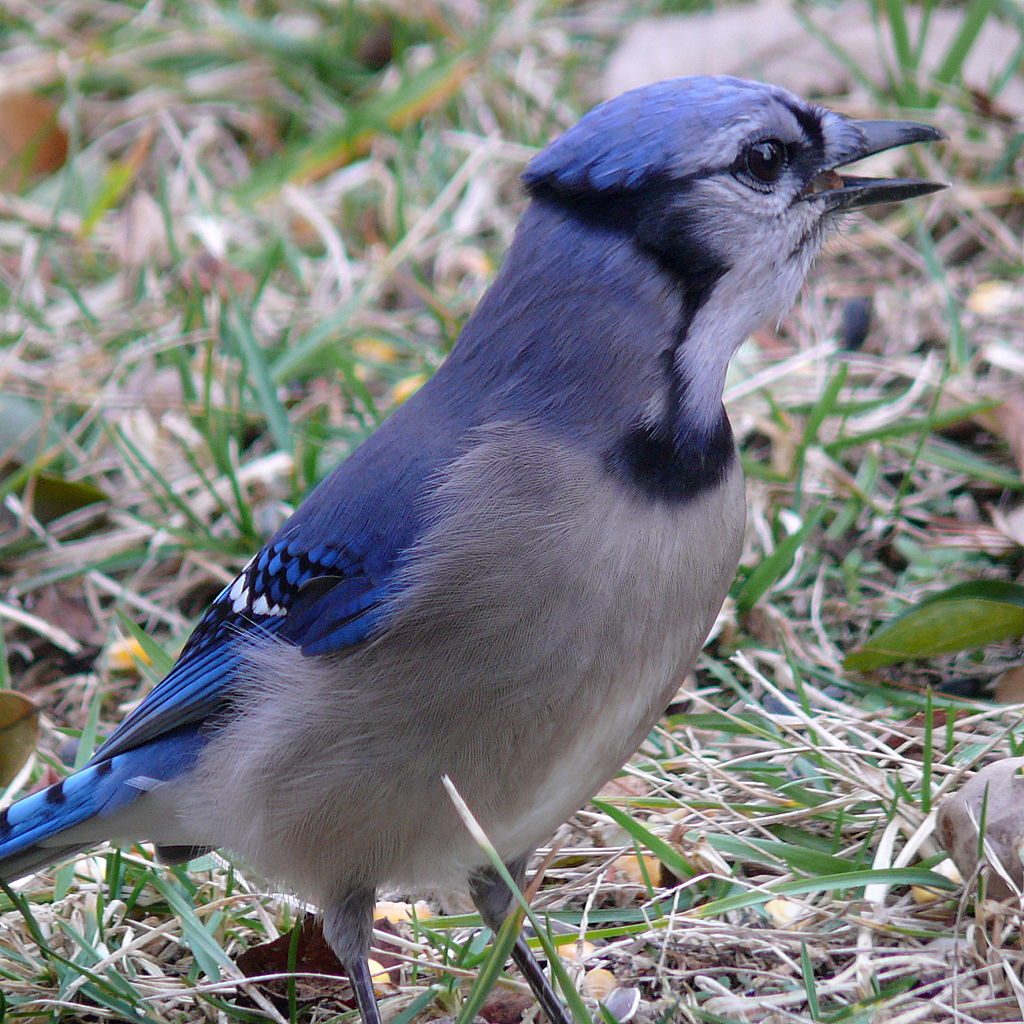

- 1
- 2
Audubon’s Blog: Blue Jays
Contributed by Bill Hamilton
Why don’t Blue Jays get love and respect from most birders? Their strikingly beautiful plumage should attract a long list of admirers and devotees. Looking around some birding web sites, though, I found the following descriptions of Blue Jays:
Now all of these things may occasionally be true, but there are also times when they are each quite false.
This noisy, aggressive bird becomes quiet and nurturing around its nest (and nestlings). Mated Blue Jay pairs tend to be monogamous and stay mated for life. The female does all of the nest incubation and is devotedly fed during these long weeks by the male. Once hatched and fledged the young Blue Jays stay with their parents in a tight, cooperative familial group well into the Fall. The Blue Jay’s family values make many other species look like barbarians!
Also, Blue Jays are themselves often chased away from feeders by larger birds (like crows, Red-bellied Woodpeckers, Red-headed Woodpeckers, and Common Grackles). They may, in fact, be so intimidated by aggressive gray squirrels that they will not be able to utilize feeder resources at all. Further, the frequently cited nest raiding behavior of this species may not be entirely accurate. Recent studies of feeding behaviors and stomach content analysis of Blue Jays indicated that only 1% of the tested birds had any residue of eggs or nestlings in their stomachs.
Blue Jays have a large throat pouch (their “gular pouch”) in which they can store and transport seeds and nuts. A Blue Jay’s gular pouch can hold up to five acorns at a time! Their tendency to gather up acorns and fly them off to locations for solitary dining coupled with the Blue Jay’s tendency to bury and store excess food make them an active agent in acorn dispersal. It is suggested that the rapid spread of oak trees after the last Ice Age was due in large part to the energetic gathering and burying of the healthiest, most viable acorns by these very selective birds!
Blue Jays do have a harsh, rasping, throaty call (let’s call this their everyday, “outdoor” voice), but they also have a wide range of both musical and innovative vocalizations including a pure tone whistle that regularly echoes across my field and woodlot. Blue jays are also able to mimic the calls of Red-tailed Hawks and Red-shouldered Hawks and can use these calls to clear out a bird feeder so that they can then eat seed without any annoying competition. Once, on a cold, snowy January morning, a blue jay in my street-side woodlot led me on a chase by making an American Robin call from high up in the tree branches. I thought that I had an early sign of spring, but instead I was being tooled around by a musically creative Blue Jay!
Blue Jays are relatively slow flyers and are, therefore, quite vulnerable as prey for hawks and owls. Blue Jays, though, respond to the presence of one of these birds of prey not in a cowering manner (which might increase the chances of survival of a given individual) but instead by becoming extremely loud and agitated. They gather up in groups to harass and mob the intruder functioning as both the guard dogs and the security forces around the bird feeders they frequent.
So Blue Jays really aren’t really just the thug-birds of our stories. They display strong family values, work as foresters and security guards, and can sing with the best of our song birds (although sometimes they choose not to). They don’t always eat their neighbor’s eggs and babies either. What more can you ask of a neighbor?